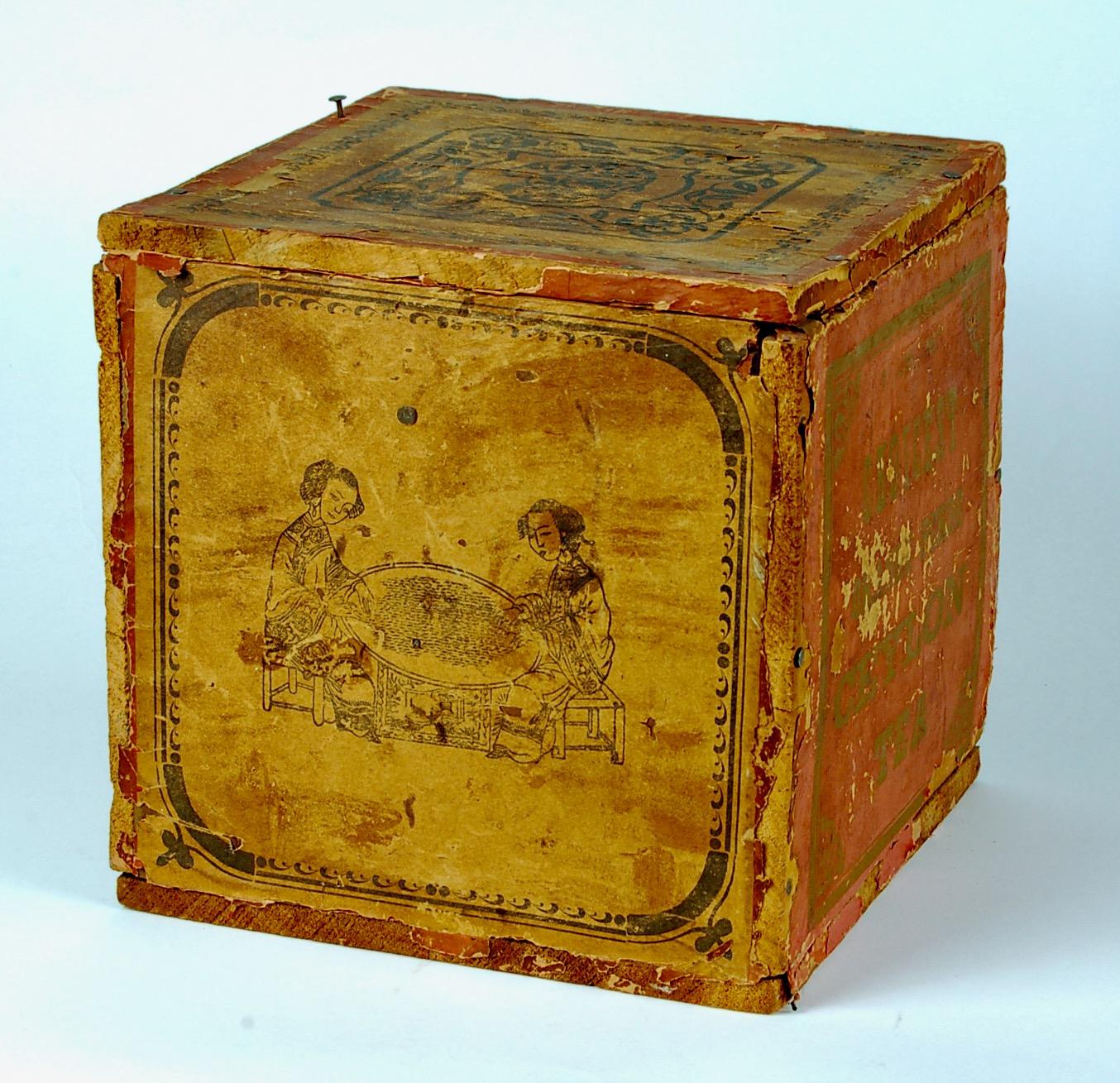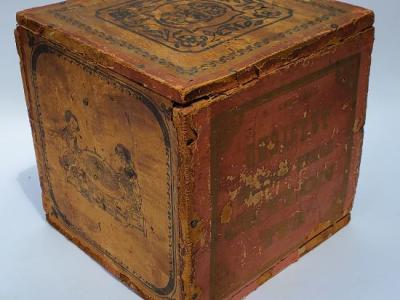Tea box
China or Japan
1860-1890
Measurements
8-1/2 in x 8-1/2 in x 8-1/2 in
Materials
Printed paper, unidentified wood
Credit Line
Historic Odessa Foundation
Accession Number
2009.44
Inscription
"CHOICEST / ORANGE PEKOE / CEYLON / TEA" is printed on one side of the box.
Condition Notes
The printed paper applied over the box is discolored and has been abraded and is torn at the edges.
Comments
Introduced to America in the 17th century, tea became a widespread and important social beverage by the end of the 18th and a ubiquitous staple in the 19th. Most tea came from China until Japan was opened to US trade in 1858. This tea box, also called a tea crate, is an 8-1/2 inch cube made of wood covered with printed paper showing images of tea rituals, Asian decoration, and a label identifying the contents as Ceylon tea. “Ceylon” referred to an area now known as Sri Lanka; “orange pekoe” designated the highest grade of tea (not a flavor), being only leaf buds picked by hand to avoid bruising them. The lid of this crate, nailed in place, has retained most of the original tea inside.
See another tea box, accession no. 2021.79.


